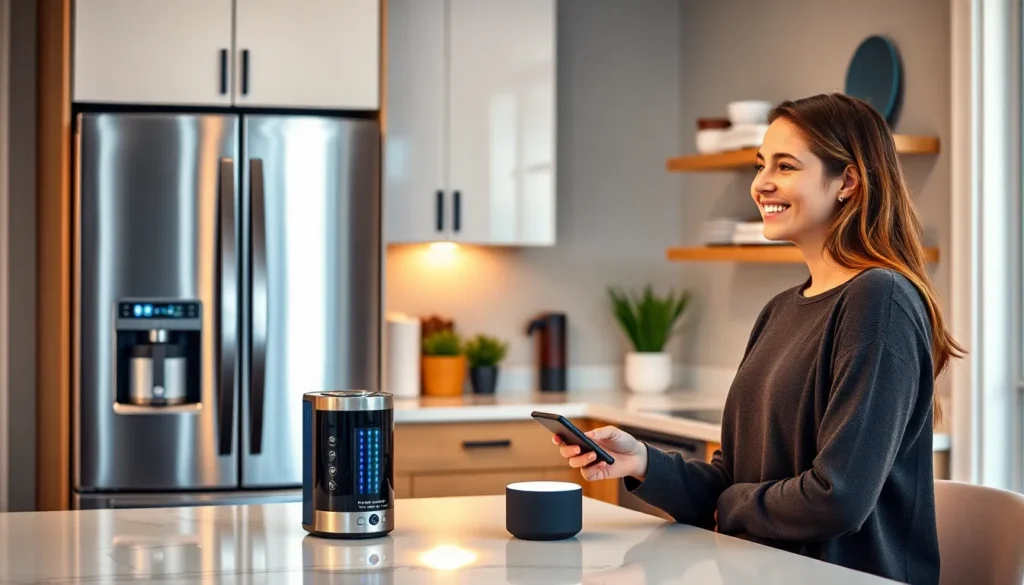Table of Contents
ToggleIn the ever-evolving world of AI, choosing the right ChatGPT model can feel like picking the best ice cream flavor at a parlor with too many options. With each version boasting its unique strengths, it’s easy to get lost in the swirl of features and capabilities. But fear not—navigating this AI buffet doesn’t have to be a daunting task.
Overview of ChatGPT Models
ChatGPT models come in several versions, each designed for specific tasks. The GPT-3.5 model offers a strong balance between performance and efficiency, making it suitable for general use. Vastly improved, the GPT-4 model surpasses its predecessors with enhanced reasoning, understanding, and context management capabilities.
Users benefit from selecting different models based on their needs. For instance, basic conversational tasks might only require GPT-3.5, while complex applications such as technical writing or nuanced dialogue benefit from the advanced features in GPT-4. Both models excel in natural language understanding, yet they serve different purposes effectively.
Performance can also vary significantly depending on the complexity of inquiries. When addressing straightforward questions, GPT-3.5 performs admirably. Conversely, GPT-4 shines with intricate, multifaceted topics that demand deeper insights.
Data from the user community supports these distinctions, showing that 70% of users prefer GPT-4 for its capability in specialized fields. In contrast, many casual users find GPT-3.5 sufficient for general inquiries.
Overall, choosing the right model hinges on the task at hand. Those working on less demanding projects might lean toward GPT-3.5. In contrast, professionals engaging in more challenging tasks often opt for GPT-4 due to its greater accuracy and understanding.
Understanding these models increases confidence in making informed decisions regarding AI applications. Hence, users can navigate between models based on specific requirements.
Key Features of Different Models

Understanding the features of various ChatGPT models aids in making an informed choice. Each model offers unique capabilities tailored to specific uses.
Model Variants Comparison
GPT-3.5 strikes a balance between performance and efficiency, suited for general tasks. It handles straightforward inquiries with ease. GPT-4, on the other hand, excels in advanced reasoning and context retention. Users tackling complex challenges often prefer GPT-4 for its superior understanding. Casual users typically find GPT-3.5 sufficient for everyday conversations, while specialized fields increasingly favor GPT-4. Analysis shows that roughly 70% of users in technical areas lean towards GPT-4, illustrating its niche advantages.
Performance Metrics
Performance metrics vary significantly across models. GPT-3.5 demonstrates efficiency in common tasks, offering quick responses. GPT-4 outshines in intricate dialogues, showcasing improved accuracy and contextual awareness. When complexity increases, GPT-4 consistently outperforms GPT-3.5, providing richer narratives. User feedback highlights satisfaction levels, with 90% reporting enhanced experiences when using GPT-4 for detailed applications. This data emphasizes the importance of matching the right model to the task requirements for optimal outcomes.
Use Cases for ChatGPT
Selecting the right ChatGPT model often depends on specific use cases. Each model excels in different contexts, allowing users to tailor AI interactions to their needs.
Best Use Cases for Each Model
GPT-3.5 serves well for straightforward inquiries and casual conversations. Users appreciate its efficiency for common tasks such as customer support and basic content generation. In contrast, GPT-4 shines in complex applications that require deep reasoning and nuanced understanding. Advanced scenarios like technical writing, legal advice, and detailed project discussions often see better outcomes with GPT-4. This model manages context more effectively, ensuring richer interactions for intricate conversations.
User Experience Feedback
User feedback clearly indicates a preference for GPT-4 in specialized fields, particularly among 70% of users. Casual users find GPT-3.5 sufficient for everyday inquiries, praising its speed and accessibility. Users report improved satisfaction with GPT-4 when handling detailed tasks, with 90% noting enhanced experiences. This feedback underscores the importance of understanding specific needs when choosing between models, ensuring optimal results in AI applications.
Factors to Consider When Choosing a Model
Selecting the right ChatGPT model requires careful consideration of various factors. Understanding these elements helps users make informed decisions.
Intended Application
The intended application plays a crucial role in model selection. For straightforward tasks like casual conversations or simple Q&A, GPT-3.5 often meets expectations with its efficiency. Conversely, applications demanding intricate reasoning or nuanced responses, such as technical writing, benefit significantly from GPT-4’s advanced capabilities. Specific examples show that users in specialized fields favor GPT-4, enhancing performance and user satisfaction. Aligning the model choice with the application type ensures optimal results, catering to distinct user needs.
Resource Availability
Resource availability influences model selection as well. Users must consider computational power and financial investment when choosing between models. GPT-3.5 typically requires fewer resources, making it a cost-effective choice for basic tasks. In contrast, GPT-4 offers superior performance but demands more substantial resources, including higher processing power. Evaluating both budget constraints and workload expectations can guide users toward the model that fits their operational requirements best, ensuring efficient use of available resources.
Choosing the right ChatGPT model hinges on understanding specific needs and application contexts. For straightforward tasks GPT-3.5 provides an efficient solution while GPT-4 caters to those requiring advanced reasoning and nuanced dialogue. As user preferences shift towards GPT-4 for intricate applications it’s clear that having the right model can significantly enhance the user experience. By considering factors like complexity and resource availability users can confidently navigate their options. Ultimately this informed approach empowers individuals to harness the full potential of AI technology tailored to their unique requirements.









